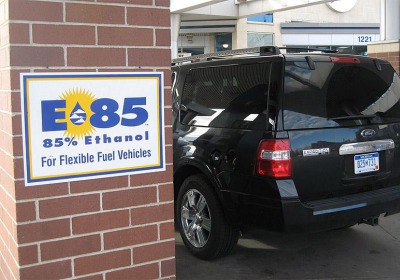E85 makes inroads on cost and availability
Wed, 23 Dec 2009Three years ago, we embarked on a Midwest road trip in search of what was then the Holy Grail of fuel: E85. Our findings weren't too positive--there were far more E85-compatible vehicles on the road in 2006 (5 million) than there were E85 pumps to fuel them (about 700 out of some 200,000 fuel stations
nationwide). In addition, those burning the mix of 15 percent gasoline and 85 percent ethanol were paying a pretty penny for their earth-friendly ways, losing about 15 percent in fuel economy while often paying the same price as regular unleaded.
Experts assured us it was only a matter of time before E85 became more available, and at more reasonable prices. So here we are, in 2009, wondering whether those predictions have come true.
The answer? Yes, sort of.
While the number of E85 outlets nationwide has grown to 2,085, the Midwest remains home to more than half of those pumps. Minnesota alone has 361 of the E85 pumps, outstripping the total number of E85 pumps on the entire West Coast (62) and the East Coast (248) combined.
The test vehicle for our latest E85 drive was a 2010 Ford Expedition EL, one of about 50 E85-compatible 2010 models now sold in the United States. More are on the way. Ford, for instance, will dramatically expand its number of ethanol burners when it launches E85-compatible EcoBoost turbocharged engines in 2011.
After establishing the 5.4-liter V8-powered Expedition's fuel mileage on a tank of regular unleaded (14.7 mpg), we pumped our first tankful of E85, priced at $2.29 per gallon (vs. $2.69 for unleaded) at a freeway-friendly station in Janesville, Wis. In the first few miles after filling up, it was interesting to watch the vehicle's onboard trip computer recalculate our estimated “distance to empty” drastically downward from 512 miles to 402 miles (or about 12.2 mpg) after about 10 miles of E85-fueled driving. Our second tank of E85, in Minneapolis, was just $2.19 per gallon (vs. $2.69 for unleaded).
Overall, E85 use cut our fuel economy to 12.3 mpg--a reduction of 16.3 percent versus unleaded (though with no noticeable effect on vehicle power or performance). But thanks to significant E85 cost savings, our loss of fuel economy was offset by a commensurate 16.7 percent reduction in fuel cost.
The bottom line: E85 is starting to makes sense--and cents--for drivers who want to burn it.
By Bob Gritzinger



